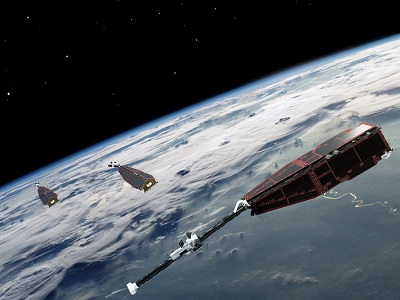- Activities
- Monitoring of Ionospheric Grad...
Monitoring of Ionospheric Gradients At Swarm (MIGRAS)
Overview
Precision and safety of life applications using trans-ionospheric signals require key information on space weather conditions in particular on the perturbation degree of the ionosphere. Such systems are particularly vulnerable against severe spatial gradients and rapid changes of the electron density (Ne) as well as the total electron content (TEC) measured along different satellite‐receiver links.
Two new Swarm products are proposed:
- TEC Gradient Ionosphere indeX (TEGIX)
- Ne Gradient Ionosphere indeX (NEGIX)
The TEGIX measures spatial TEC gradients in the topside ionosphere (Swarm up to GNSS orbit) using GNSS Precise Orbit Determination (POD) measurements whereas the NEGIX measures the spatial Ne gradients using Swarm onboard Langmuir probe (LP) measurements (using 2 Hz data).
The approach takes benefit from the coordinated flight of satellites A and C at an orbit height of about 460 km.
A first iteration of a prototype demonstrator is proposed for TEGIX and NEGIX generation and samples case studies to explore their potential impact, utility and usage. A comprehensive validation study is outlined for TEGIX and NEGIX products.
Gradient Ionosphere indeX (GIX) estimated from ground GNSS observations will be compared with TEGIX and NEGIX. Swarm 16 Hz density estimates, available as an advanced product and known to be relatively stable and unbiased, will serve as a reference for a relative scaling A<-->C of the LP 2 Hz density measurements.
Project duration: October 2022 – September 2023. This project is funded by ESA via the Swarm DISC, Sub-Contract No. SW‐CO‐DTU‐GS‐133.
